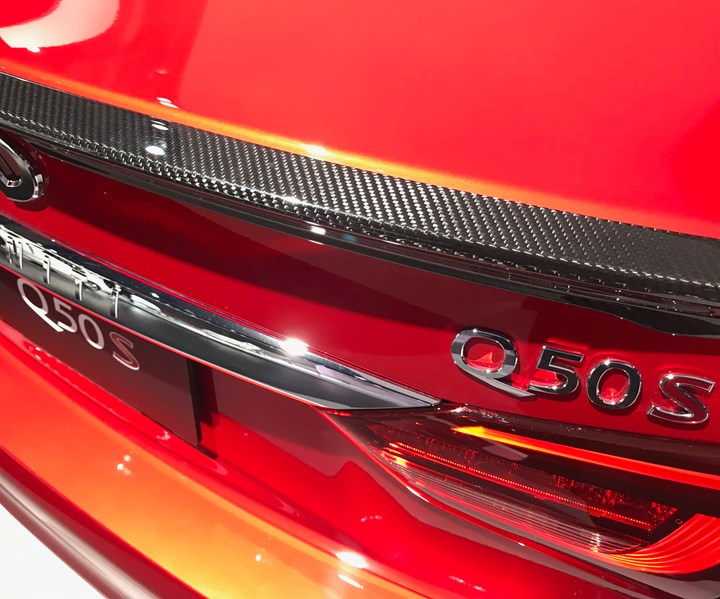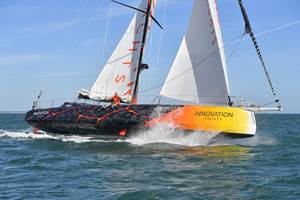U.S. DOT, EPA set new automotive emissions, fuel efficiency standards
Under the new standards, the projected overall industry average required fuel economy in MYs 2021-2026 is 40.4 miles per gallon, compared to 46.7 mpg in MY 2025 under the 2012 standards.

Source | CW
The U.S. Department of Transportation's National Highway Traffic Safety Administration (NHTSA) and the U.S. Environmental Protection Agency (EPA) on March 31 released the final Safer Affordable Fuel-Efficient (SAFE) Vehicles Rule setting U.S. corporate average fuel economy (CAFE) and CO2 emissions standards for model years 2021-2026 passenger cars and light trucks.
The final rule will increase stringency of CAFE and CO2 emissions standards by 1.5% each year through model year 2026, as compared with the standards issued by the Obama Administration in 2012, which would have required about 5% annual increases. This is a change from the proposal issued in 2018. The EPA says the majority of automakers are not meeting the 2012 standard without resorting to the use of credits. The final rule can be found here: https://www.epa.gov/regulations-emissions-vehicles-and-engines/safer-affordable-fuel-efficient-safe-vehicles-final-rule.
NHTSA is required by Federal law to set fuel economy standards at the maximum feasible level for passenger cars and light trucks, for every model year. If NHTSA determines that standards previously set are no longer maximum feasible, NHTSA can amend them. In determining what levels of CAFE standards would be maximum feasible, the law directs NHTSA to consider four specific factors: technological feasibility; economic practicability; the effect of other motor vehicle standards of the government on fuel economy; and the nation's need to conserve energy.
On April 2, 2018, the EPA issued the Mid-Term Evaluation Final Determination that found that the MY 2022-2025 CO2 emissions standards are not appropriate and should be revised. For nearly two years, the agencies worked together to extensively analyze current automotive and fuel technologies, reviewed economic conditions and projections, and consulted with other Federal agency partners to ensure the most reliable and accurate analysis possible. The agencies also evaluated more than 750,000 public comments and held three public meetings.
The EPA says the SAFE Vehicles Rule reflects the realities of today's markets, including substantially lower oil prices than in the original 2012 projection, significant increases in U.S. oil production, and growing consumer demand for larger vehicles.
The EPA says the SAFE Vehicles Rule increases U.S. competitiveness by reducing regulatory costs by as much as $100 billion through model year 2029. According to NHTSA/EPA projections, it will also boost new vehicle sales through model year 2029 by up to 2.7 million vehicles. The EPA says the new rule will reduce the average price of a new vehicle by about $1,000 and thus will make it easier for Americans to afford to buy newer, cleaner and safer vehicles.
The EPA says the new SAFE Rule will also help more Americans afford newer vehicles, which NHTSA's research shows are safer than ever. The EPA estimates that about 3,300 fewer crash fatalities, 397,000 fewer injuries, and more than 1.8 million fewer vehicles damaged in crashes are projected over the lifetimes of vehicles built according to these new standards.
Under the SAFE Rule, the projected overall industry average required fuel economy in MYs 2021-2026 is 40.4 miles per gallon, compared to 46.7 mpg projected requirement in MY 2025 under the 2012 standards, and the new rule reduces the number of credits that are not associated with improved fuel economy. The agencies project that under these final standards, required technology costs would be reduced by $86 to $126 billion over the lifetimes of vehicles through MY 2029.
Under the rule, new vehicles will continue to be required to meet the EPA’s Clean Air Act's pollution standards, ensuring that air quality will be protected from smog-forming emissions. The EPA says the rule will also see CO2 reductions year over year.
Related Content
European boatbuilders lead quest to build recyclable composite boats
Marine industry constituents are looking to take composite use one step further with the production of tough and recyclable recreational boats. Some are using new infusible thermoplastic resins.
Read MoreComposites end markets: Sports and recreation (2025)
The use of composite materials in high-performance sporting goods continues to grow, with new advancements including thermoplastic and sustainability-focused materials and automated processes.
Read MoreBio-based, fire-resistant composites become mainstream
Projects use Duplicor prepreg panels with highest Euroclass B fire performance without fire retardants for reduced weight, CO2 footprint in sustainable yet affordable roofs, high-rise façades and modular housing.
Read MoreAirbus works to improve the life cycle of composites in future aircraft
This companion article to CW's September 2024 Airbus Illescas plant tour discusses recycling, LCA, biocomposites, Fast Track technologies, qualification and more.
Read MoreRead Next
Ultrasonic welding for in-space manufacturing of CFRTP
Agile Ultrasonics and NASA trial robotic-compatible carbon fiber-reinforced thermoplastic ultrasonic welding technology for space structures.
Read MoreCutting 100 pounds, certification time for the X-59 nose cone
Swift Engineering used HyperX software to remove 100 pounds from 38-foot graphite/epoxy cored nose cone for X-59 supersonic aircraft.
Read MoreCeramic matrix composites: Faster, cheaper, higher temperature
New players proliferate, increasing CMC materials and manufacturing capacity, novel processes and automation to meet demand for higher part volumes and performance.
Read More












